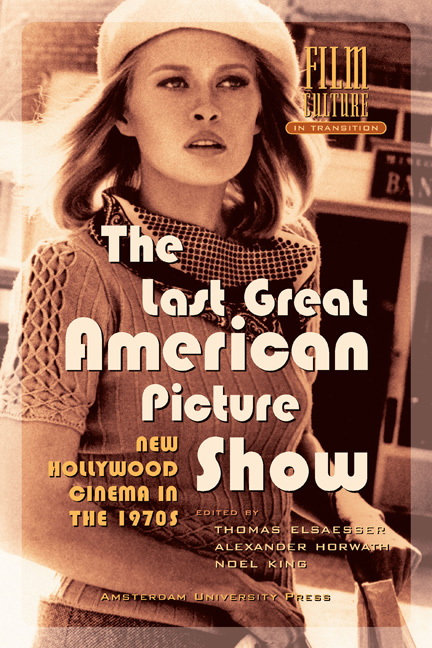New Hollywood and the Sixties Melting Pot
Published online by Cambridge University Press: 25 January 2021
Summary
Let me begin with a few printed artifacts, all of them from New York in the early 1960s: two successive issues of the NY Film Bulletin published in early 1962, special numbers devoted to Last Year at Marienbad and François Truffaut; and three successive issues of Film Culture, dated winter 1962, winter 1962-63, and spring 1963. Cheaply printed but copiously illustrated, the two special numbers of the NY Film Bulletin are the 43rd and 44th issues of a monthly, respectively twenty and twenty-eight pages in length. THE LAST YEAR AT MARIENBAD issue consists exclusively of interviews with Alain Resnais, Alain Robbe-Grillet, and editor Henri Colpi, all translated from French magazines, and a briefly annotated Resnais filmography. The Truffaut issue – apart from a translation of Truffaut's André Bazin obituary from Cahiers du cinéma, brief script extracts from SHOOT THE PIANO PLAYER AND JULES AND JIM, and a Truffaut filmography – contains all new material: articles on SHOOT THE PIANO PLAYER by the magazine's editors Marshall Lewis and Andrew Sarris and its publisher R.M. Franchi, and a ten-page interview with Truffaut by Franchi and Lewis. In Film Culture no. 26, eighty pages long, articles on Preston Sturges (by Manny Farber and others), Frank Tashlin, and Vincente Minnelli's TWO WEEKS IN ANOTHER TOWN (the latter two by Peter Bogdanovich) rub shoulders with with a translation of the ‘scenario’ (i.e., treatment) of Jean-Luc Godard's VIVRE SA VIE, P. Adams Sitney writing about Stan Brakhage's ANTICIPATION OF THE NIGHT and PRELUDE, two statements by experimental animator Robert Breer, an interview with Soviet director Grigori Chukhrai, and an article about L’AVVENTURA, LA DOLCE VITA, and BREATHLESS, among other pieces; on the cover is a reproduction of the opening title of Orson Welles's MR. ARKADIN. NO. 27, in addition to featuring Farber again (this time on ‘White Elephant Art vs. Termite Art’), includes Sarris's ‘Notes on the Auteur Theory in 1962’, Pauline Kael on SHOOT THE PIANO PLAYER, Jack Smith on ‘The Perfect Filmic Appositeness of Maria Montez’, Gregory Markopoulos on Ron Rice, more material on Breer, and a special section on Welles's celebrated 1938 War of the Worlds radio broadcast. And sixty-seven of the ninety-six pages of No. 28 are devoted to Sarris's soon-to-be-notorious and highly influential ‘The American Cinema’, later to be expanded into a book.
- Type
- Chapter
- Information
- The Last Great American Picture ShowNew Hollywood Cinema in the 1970s, pp. 131 - 152Publisher: Amsterdam University PressPrint publication year: 2004

